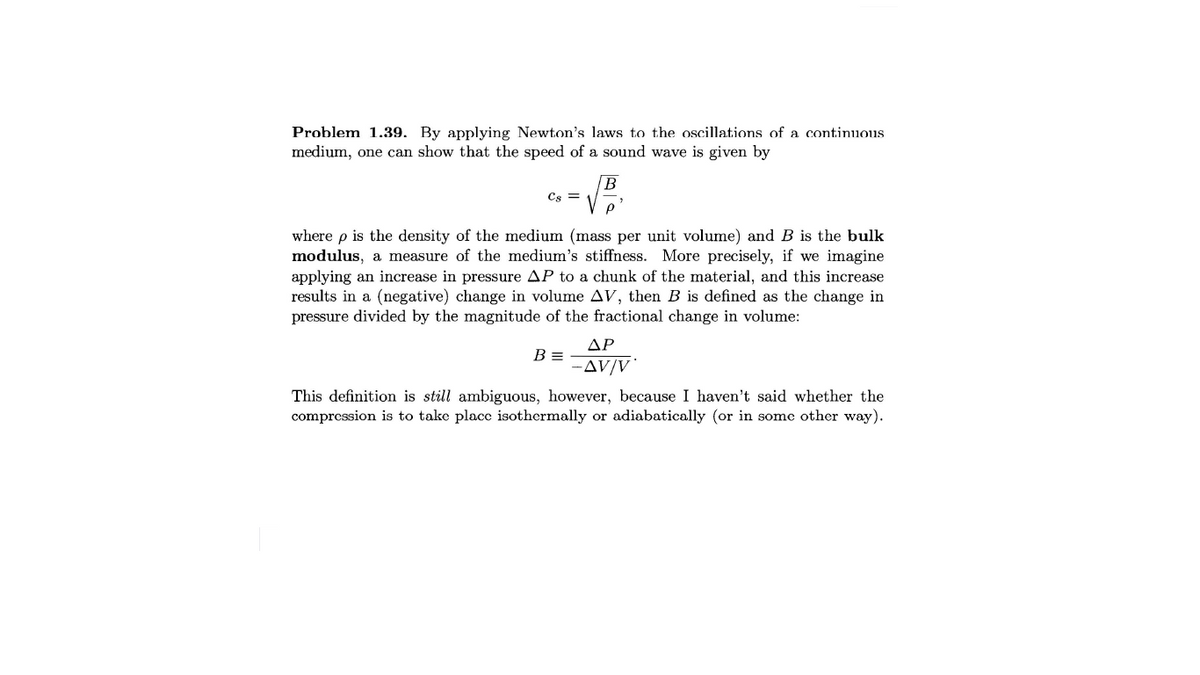Problem 1.39. By applying Newton's laws to the oscillations of a continuous medium, one can show that the speed of a sound wave is given by B Cs = where p is the density of the medium (mass per unit volume) and B is the bulk modulus, a measure of the medium's stiffness. More precisely, if we imagine applying an increase in pressure AP to a chunk of the material, and this increase results in a (negative) change in volume AV, then B is defined as the change in pressure divided by the magnitude of the fractional change in volume: ΔΡ B = -AV/V* This definition is still ambiguous, however, because I haven't said whether the take place isothermally or adiabatically (or in some other way). compression is
Problem 1.39. By applying Newton's laws to the oscillations of a continuous medium, one can show that the speed of a sound wave is given by B Cs = where p is the density of the medium (mass per unit volume) and B is the bulk modulus, a measure of the medium's stiffness. More precisely, if we imagine applying an increase in pressure AP to a chunk of the material, and this increase results in a (negative) change in volume AV, then B is defined as the change in pressure divided by the magnitude of the fractional change in volume: ΔΡ B = -AV/V* This definition is still ambiguous, however, because I haven't said whether the take place isothermally or adiabatically (or in some other way). compression is
Related questions
Question
100%
Compute the bulk modulus of an ideal gas, in terms of its pressure P, for both isothermal and adiabatic compressions.

Transcribed Image Text:Problem 1.39. By applying Newton's laws to the oscillations of a continuous
medium, one can show that the speed of a sound wave is given by
B
Cs =
where p is the density of the medium (mass per unit volume) and B is the bulk
modulus, a measure of the medium's stiffness. More precisely, if we imagine
applying an increase in pressure AP to a chunk of the material, and this increase
results in a (negative) change in volume AV, then B is defined as the change in
pressure divided by the magnitude of the fractional change in volume:
ΔΡ
B =
-AV/V*
This definition is still ambiguous, however, because I haven't said whether the
take place isothermally or adiabatically (or in some other way).
compression is
Expert Solution
This question has been solved!
Explore an expertly crafted, step-by-step solution for a thorough understanding of key concepts.
This is a popular solution!
Trending now
This is a popular solution!
Step by step
Solved in 3 steps
